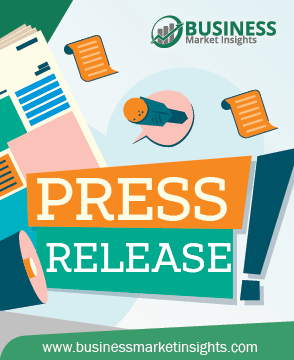
Published On: May 2024

Published On: May 2024

According to Business Market Insights’ research, the North America wind turbine rotor blade market was valued at US$ 2,022.51 million in 2022 and is expected to reach US$ 4,552.37 million by 2030, registering a CAGR of 10.7% from 2022 to 2030. Increasing adoption of recycling technology and government initiatives to boost green energy production is among the critical factors attributed to the North America wind turbine rotor blade market expansion.
Key players in the wind turbine blade industry continuously focus on developing innovative designs and materials for the turbine blade to increase overall efficiency. In the last two years, many public and private organizations have successfully developed recycled blade manufacturing processes. For instance, Siemens Gamesa came up with the industry's first recycled blade for offshore and onshore wind farms. Moreover, many private organizations have developed recycling processes for decommissioned wind turbine blades. Previously, the industry was unable to recycle wind turbine blades after decommissioning, owing to which the blades would end up in the trash, further increasing the need for waste management activities and the risk of environmental pollution. With these innovative recycling methods, blade materials can be recycled and repurposed in various sectors. For instance, Carbon Rivers developed a method for recovering clean, mechanically intact glass fiber from decommissioned wind turbine blades. These methods will help the wind turbines to become truly sustainable. Such initiatives are expected to reduce the overall impact generated by wind turbine blades, allowing energy companies to deploy a high number of offshore wind turbines without any risks of environmental pollution and the government's stringent regulations or limitations.
On the contrary, high cost of wind turbine installation and maintenance hurdles the growth of North America wind turbine rotor blade market.
Based on type, the North America wind turbine rotor blade market is categorized into Below 40m, 41-60m, 61-70m, and Above 70m. The 61-70m segment held 36.5% market share in 2022, amassing US$ 737.66 million. It is projected to garner US$ 1,638.93 million by 2030 to expand at 10.5% CAGR during 2022–2030.
In terms of deployment type, the North America wind turbine rotor blade market is bifurcated into onshore and offshore. The onshore segment held 90.1% share of North America wind turbine rotor blade market in 2022, amassing US$ 1,822.84 million. It is projected to garner US$ 4,000.96 million by 2030 to expand at 10.3% CAGR during 2022–2030.
Based on country, the North America wind turbine rotor blade market has been categorized into the US, Canada, and Mexico. Our regional analysis states that the US captured 88.1% share of North America wind turbine rotor blade market in 2022. It was assessed at US$ 1,781.69 million in 2022 and is likely to hit US$ 3,926.29 million by 2030, exhibiting a CAGR of 10.4% during 2022–2030.
Key players operating in the North America wind turbine rotor blade market are TPI Composites Inc, Vestas Wind Systems AS, ENERCON GmbH, LM Wind Power AS, Siemens Gamesa Renewable Energy SA, Acciona SA, Suzlon Energy Ltd, Nordex SE, and Envision Energy USA Ltd, among others.
Contact Us
Phone: +16467917070
Email Id: sales@businessmarketinsights.com